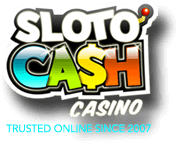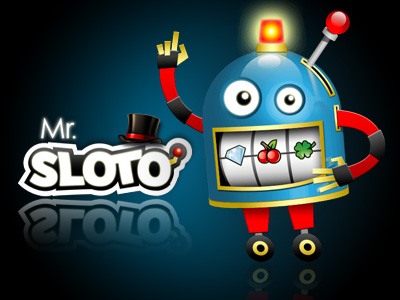Marketers often employ brand mascots to materialize a brand’s personality. The mascot – an animated or animal object figure, symbolizes the brand to act as the brand’s public face in the brand’s advertisements.
The mascot is symbolic. The goal of introducing a mascot is to present the brand as more trustworthy, more genuine and more consumer focused. One of today’s best-known mascots is our very own, Mr. Sloto of Sloto Cash Casino, who engages with the SlotoCash casino’s customers by presenting a friendly, familiar, and approachable figure that customers know is there to offer generous bonuses and rewarding real money payouts to SlotoCash customers.
Mascots change the way that people see famous brands and help them relate to the brand’s marketing message. Over the years there have been brand mascots that have failed – MaDonald’s shady New Hamburger dude, Nabisco’s featureless alien break dancer, singing Spongmonkeys for Quiznos submarine sandwiches and others.
But almost everyone connects favored products such as Pillsbury, Kentucky Fried Chicken, Kool Aid and M&Ms with their mascots – the Pillsbury Doughboy, Colonel Sanders, the Kool Aid Pitcher Face, and M&M’s candies.
Some of the mascots were designed and introduced thanks to massive marketing research and development efforts. But other mascots became beloved representatives of their brands thanks to coincidence.
After you check out SlotoCash Casino’s brand you can review the secret stories behind many of today’s best-known and most-beloved mascots.
Kentucky Fried Chicken
Colonel Sanders was the actual initiator and owner of Kentucky Fried Chicken. His messages of optimism and calm certainty hid a life story that showed anything but security. Sanders grew up in poverty. His father died when he was six and when he was in 7th grade he had to drop out of school to go to work as a farmhand to help support his family. Over the years he got fired from a railway for fighting and then ruined a possible legal career when he got into another fight. He sold life insurance while living with his mother and got fired from that job too.
His attempts at entrepreneurship floundered, first as the owner of a ferry boat business, and then as with a lamp manufacturing company. At age 40 he started to sell chicken dishes at a service station but a motel that he had bought next door caught fire and both burned. He rebuilt but was forced to close when WWII broke out.
It was only after he reopened and franchised, with his “secret recipe” that Kentucky Fried Chicken became a hit. Sanders was adamant that he and only he could properly represent the restaurant and he became the genial representative and spokesperson for his chain.
Sun-Maid
For more than a century the face of Lorraine Collete has been staring out from boxes of Sun-Maid raisins, showing a fresh-faced, well-fed sun-girl/fun-girl. Collett was first noticed when she represented the California Associated Raisin Company at the Panama-Pacific International Exposition in 1915. She, and other Sun-Maid girls, handed out raisin samples to promote the raisin industry while wearing blue sunbonnets and white blouses with blue piping.
After a picture of Collett appeared in the San Francisco Bulletin, Collett was asked to pose for an artist who created the iconic pose that showed Collett in front of a glowing sunburst with an overflowing tray of grapes.
Over the years the picture was updated several times and in 1970, a new model, Liz Weide, was used for the newest portrait. Today Sun-Maid advertises their product using an animated Sun-Maid girl who walks and talks but she looks almost identical to the 1915 image.
Mr. Clean
Bald Mr. Clean personified Proctor & Gamble’s super duper all-purpose cleansing product.
In 1957, the image of a brawny, bald, cleanliness-obsessed Mr. Clean was introduced and has, for the last 60+ years, keep the Mr. Clean product at the top of the market for cleaning products. The similarities between Mr. Clean and Yul Brenner, the actor who had started in the 1956 hit King and I, was never confirmed but is too coincidental to be overlooked. Mr. Clean, imagined as a genie who could push a cleaning solution’s magic abilities, was an immediate hit with the public and the character’s iconic white shirt and pants, bald head and earring were embraced by the public.
Proctor & Gamble created an entire story around Mr. Clean, relating that he was found as a baby by a couple after they opened their farmhouse door and found the tyke cleaning their steps. As he grew he loved to clean messes and after leaving home, wandered the world, cleaning. In the ‘60s actor House Peters was hired to play Mr. Clean in live action commercials and he continued to do so until he retired and P&G started to use computer animation to portray Mr. Clean.
Ronald McDonald
Willard Scott, a Washington D.C. radio personality, performed as the “Ronald McDonald Hamburger-Happy Clown” on TV in 1963 using a character that he had developed. Scott went on to become the NBC weatherman but early in his career, he created Ronald McDonald as part of his work for the DC area McDonald’s franchise.
The international McDonald’s franchise adopted the character as their mascot and created a fantasy world of McDonaldland where Ronald McDonald enjoyed adventures with the Hamburglar, Mayor McCheese, Birdie the Early Bird, Grimace and the Fry Kids. Today numerous “Ronald McDonalds” represent McDonalds at charity events and in hospital visits to kids. Ronald McDonald is also well known for his Ronald McDonald Houses which are located near hospitals around the country and provide accommodations for parents of children undergoing treatments in the hospitals.






